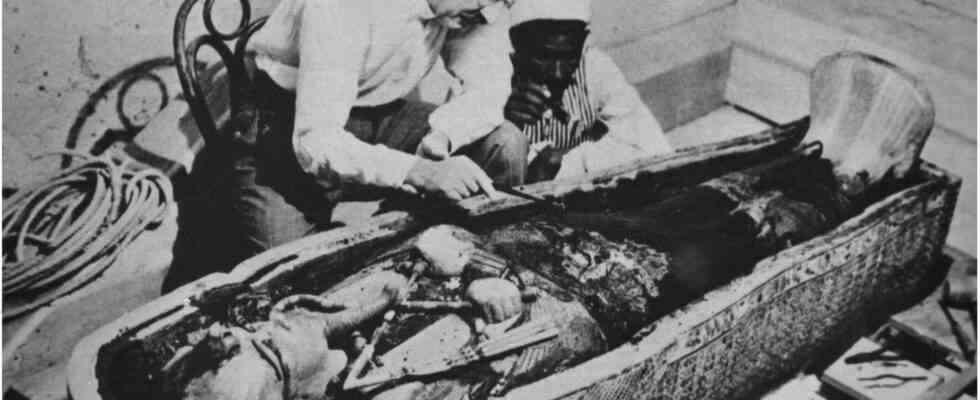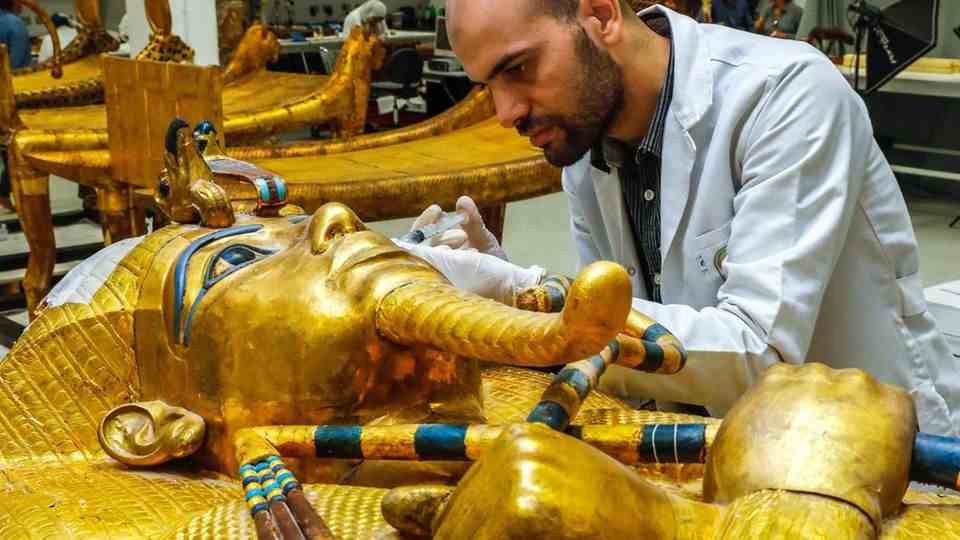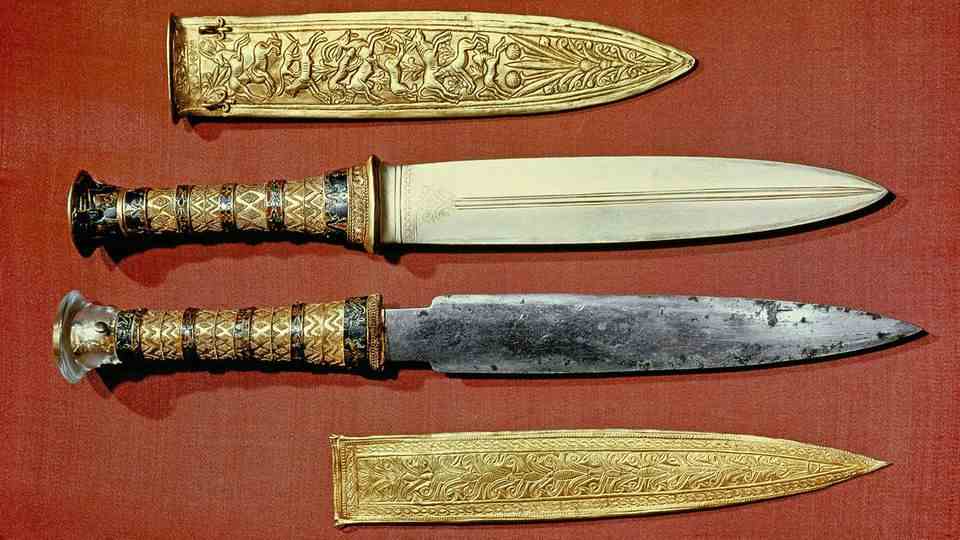World famous pharaoh
100 years of Tutankhamun: How Howard Carter dug up a star
Tutankhamun: The English archaeologist Howard Carter excavating the royal tombs in Thebes
© akg-images / Picture Alliance
“First steps of tomb discovered” – this is how Howard Carter sums up the beginning of what would become Egyptology’s most important find. 100 years after the discovery of Tutankhamun’s tomb, the enthusiasm is unbroken. Big questions remain to this day.
By Johannes Sadek
In the days leading up to his discovery of the century, everything in Howard Carter’s working life seems to be going on as usual. “Leave Cairo for Luxor,” the British archaeologist wrote succinctly in his diary on October 27, 1922. On the way to Upper Egypt, donkeys carry his luggage, he pays salaries to various assistants. But soon thereafter, on November 4, 1922, the sensational discovery that would make him famous began in the Valley of the Kings: “First steps of tomb discovered,” Carter writes in just five words, as the dust begins to reveal the first signs of what should turn out to be the tomb of the pharaoh Tutankhamun. The discovery 100 years ago is considered a milestone in archeology and probably the most famous find from ancient Egyptian civilization.
Tutankhamun’s tomb was spectacular because it was largely intact
About three weeks later, the burial chamber and all its treasures are finally revealed in the candlelight: “The hot air made the candle flicker,” writes Carter, “but as soon as the eyes adjusted to the shimmer of light, the interior of the chamber gradually became apparent , a strange and glorious mixture of extraordinary and beautiful objects piled one on top of the other.” The grave with reference number KV62 was spectacular because it was largely intact. The treasures were buried and therefore escaped grave robbers. Archeology is lucky today that Lord Carnarvon, Carter’s financier and the one who had acquired the excavation rights from the Egyptian government, did not run out of patience beforehand. Because treasure hunters and archaeologists had been digging in the Valley of the Kings for decades, and in the years leading up to the great discovery, the view matured that the area had slowly been grazed. In June 1922, Carter had to go to Carnarvon and beg for funds for a final season of digging.
Fascination for the Egyptian pharaoh unbroken to this day
100 years later, the hype surrounding the child king, probably the best-known of the approximately 170 pharaohs from ancient Egypt, is unbroken. A US touring exhibition of his artifacts in the 1970s drew more than eight million visitors. In Paris, around 1.4 million people visited a Tutankhamun show in 2019 – to date the most visited exhibition in France. “King Tut” is also the star in the Great Egyptian Museum (GEM), which is expected to open in 2023 near the Pyramids of Giza. At the age of nine, Tutankhamun ascended the Egyptian throne in 1332 BC – around 3300 years ago – as one of the last kings of the 18th dynasty. According to experts, his greatest achievement before his unexpected death after nine or ten years was turning away from his father Akhenaten’s radical religious reforms that had destabilized the country. Tut-ankh-amun literally means “Living Image of Amun” (Amun is considered the king of the ancient gods).
Many questions are still open
The enthusiasm does not stop because many details, as well as the question of possible further burial chambers, have not been finally clarified to this day. DNA analyzes showed, for example, that the pharaoh probably contracted malaria and suffered from the bone disease Morbus Köhler, possibly as a child of an incestuous marriage. With these findings, the widespread theory that Tutankhamun had been murdered seemed to be refuted. But what, as US Egyptologist Bob Brier suspects after extensive research, if the child king was not a frail and ailing youth at all, but a warrior? For example, leather armor was found in the grave, which may have been used in battle.

Archaeologist Carter: “It’s wonderful”
Perhaps some questions will forever remain unanswered, such as whether archaeologist Carter profited from the treasures. That should hardly stop the rush to exhibitions on the pharaoh. The GEM in Giza is set to soon feature 4,700 of the more than 5,000 artifacts found near Tutankhamun’s mummy: clothing, games, jewels, weapons, furniture, cosmetics and more. Historian Christina Riggs describes that Tutankhamun played an even bigger role: as cultural ambassador, source of finance for the Egyptian government and servant of covert statecraft. According to Riggs, his artifacts – and in which countries they were exhibited in the respective political context – are a form of soft power and influence that visitors rarely see through. But you can also simply marvel at the golden treasures behind glass showcases. Like Carter, when asked if he could see anything during a chamber tour, said, “Yes, it’s wonderful.”



